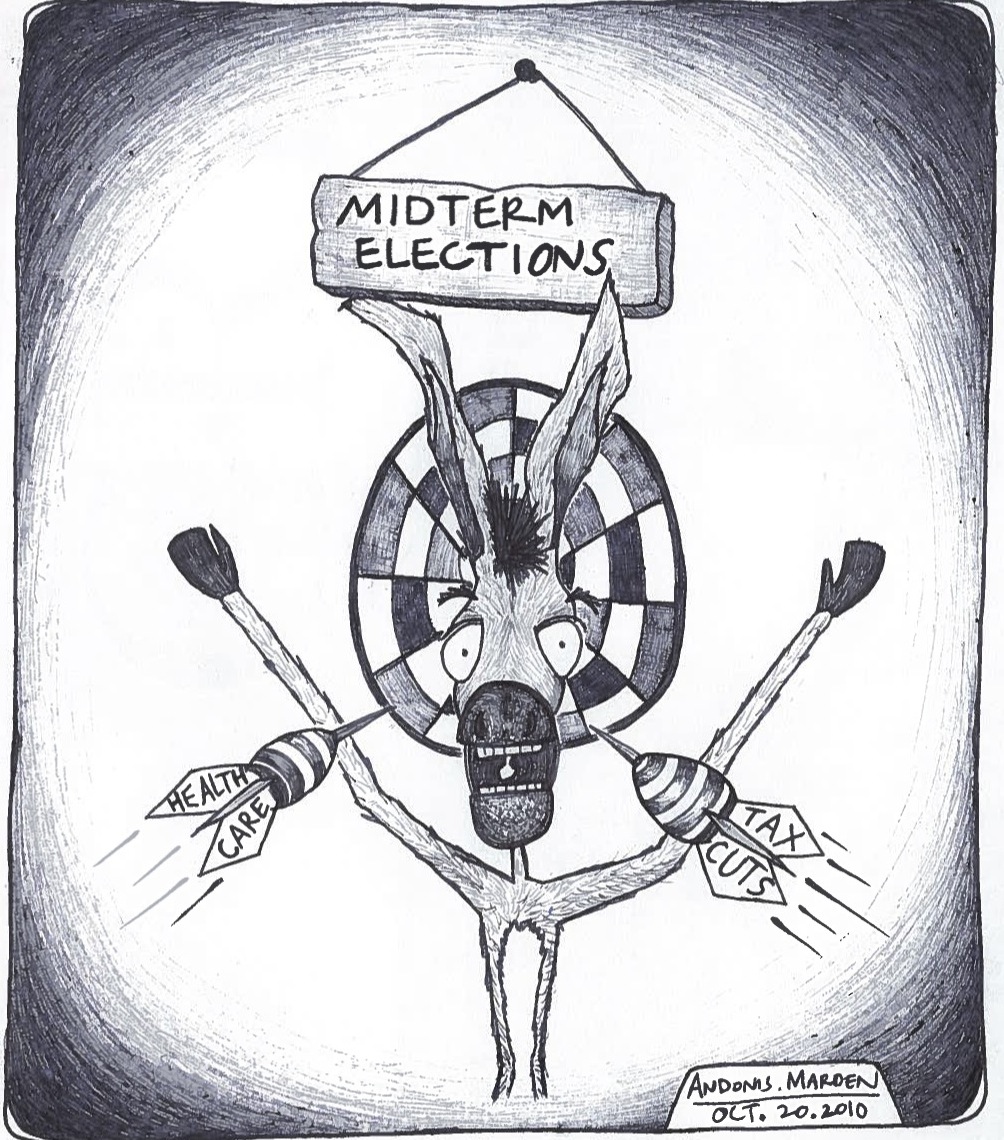On March 9, 2011, Governor Pat Quinn signed legislation effectively abolishing the death penalty in the state of Illinois, making it the 16th state without the death penalty.[i] The next day, on March 10, 2011, Johnnie Ray Baston was executed in Ohio for aggravated murder. He is the 9th person to be put to death this year.[ii]
Numbers ten and eleven followed shortly after. However, the cost of execution remains staggeringly high compared to life in prison, innocent people are still being put to death, and states are still trying to find the most effective and least painful method of execution. The system is broken. These problems must be addressed, especially if the United States is to continue to defend its use of the death penalty on the international stage.
Since the death penalty was reinstated in the 1970s, 1,240 men and three women have been put to death in thirty-five states.[iii] While the majority of deaths in the past two decades have been by lethal injection, states still put convicts to death using electrocution and firing squads, and used gas chambers and hanging until the late 1990s. Throughout that time, individuals have continued to fight the constitutionality of the death penalty. Since 1976, only two states, New Mexico and now Illinois, which had originally allowed for the death penalty, have since changed their laws.
For ten years, from 1967 to 1977, a moratorium was placed on death penalties as cases were brought to the courts addressing its constitutionality. While arguments based on the Fourteenth Amendment, guaranteeing due process, were thrown out, those that argued the Eighth Amendment, which talks about cruel and unusual punishment, had more staying power.
On June 29, 1972 the United States Supreme Court ruled that the existing death penalty statutes found in forty states were unconstitutional under the Eighth Amendment. The court found in Furman v. Georgia that the standard for “cruel and unusual punishment” is if the sentence is too severe for the crime, if it is arbitrary, if the sentence offends society’s sense of justice or if the sentence is not more effect than a less severe punishment. The ruling commuted 629 death row inmates around the country and effectively suspended the death penalty until new valid statutes could be put in place.[iv]
States began passing statutes allowing for discretionary guidelines for judges and juries deciding on capital punishment. The Supreme Court upheld these guidelines in 1976 in Gregg v. Georgia while approving other procedural reforms. These included bifurcated trials, where one jury decides guilt and the other determines sentencing, automatic review of convictions and sentencing by the appellate courts, and proportionality review, which allows the appellate courts to compare the sentencing between similar cases.[v] In the 1980s further restrictions were placed on the death penalty including banning it as a sentence for the mentally challenged and juveniles.
Surprisingly in the most recent case of abolishment, cruel and unusual punishment was not the lead cause to strike the statute from the law books. Congressmen from Illinois looked at the cost savings they would incur from having to pay for lengthy trials. Fifteen people sat on death row when Governor Quinn signed the bill. Death row inmates’ legal fees for the mandatory appeals process can easily rack up to millions of dollars, while the average cost of a prisoners needs for twenty years is roughly one $1 million. “We have spent over $100 million of taxpayer money defending and prosecuting death row cases. The death penalty does not make our society safer, I believe. It has been an ineffective and expensive use of our scarce resources,” said Republican Senator Dan Duffy.[vi] Several studies have taken place in states across the country comparing the cost of putting someone to death versus giving them a life sentence. In 2008, when California’s death row had 670 occupants, it was estimated that they cost the state $90,000 more per inmate per year or $63.3 million per year. If the system was reformed to give greater assurance of a fair process, the price tag shoots to $232.7 million per year.[vii] In the same year, a Maryland study determined that an average capital-eligible case cost the state $1.1 million dollars; however that same case, when the death penalty was sought and won cost the state $3 million, $1.9 million more than a life sentence.[viii] The reason for the high cost is specialized lawyers, required appeals processes and the sheer length that these cases can remain in the court systems.
Congressmen also cited the imperfection of the system. The fear that innocent people may still be put to death, even with the advanced technology and DNA testing available, mistakes can be made. “We’re here because we’ve seen countless examples of the fact that the system has failed,” said Democratic Senator Toi Hutchinson. “This question is not about the people who we know did it. It’s about the people who were convicted who didn’t. It’s about our system of justice is actually predicated upon the protection of the innocent and executing one innocent person is too high a price to pay.” [ix]
The Death Penalty Information Center (DPIC) has compiled and continues to maintain a list of innocence following strict guidelines. The list includes only former death row inmates who have been acquitted of all charges that put them on death row, had all of the charges dismissed by the prosecution or been granted a pardon based on evidence of innocence. Going back to 1973, this list includes 124 cases.[x] To battle these cases, it has been suggested that two commissions be created to try and foresee and prevent these mistakes. One would look at the cases that were overturned and see how and where the trial went wrong in originally convicting them. The second would study the cases of those currently on death row and explore the possibility of their innocence.[xi]
However, the easiest solution to both of these problems lies in the statutes themselves. Under a proposed “golden rule” in Massachusetts, then-Governor Mitt Romney pushed for a death penalty statute that stated that “defendants would only be eligible for a death sentence if the jury believed they were guilty beyond any doubt and the conviction was obtained through the use of scientific evidence.”[xii] While clearly no system can ever be perfect, this would greatly cut down on the number of death penalty convictions, thus cutting costs for states overall and greatly diminishing the chances of an innocent man being put to death.
The actual act itself must also be limited to methods proven to be quick and painless. Ohio’s use of barbituate pentobarbital in their recent execution has refocused attention on the discontinuation of sodium thiopental and the three drug lethal injection.[xiii] Unlike past methods, the new method only requires one drug. A lethal dose acts as it does for animal euthanasia causing unconsciousness then respiratory and cardiac arrest. The entire process takes seconds and is said to painless. Ohio switched to the one drug method after the failed execution of Romell Broom in September of 2009 when his veins failed to allow the injection of the drugs. They attempted for two hours before a stay was issued. Broom’s fate has yet to be determined and the case has returned to the courts over the cruel and unusual nature of his attempted execution. While many have criticized Ohio’s use of this untested drug, the success of the execution speaks for itself. So far there have been 12 executions using the one-drug method and they have all worked without complication[xiv] and so states that still allow for electrocution, gas chamber, hanging and firing squad should rethink their statutes allowing for these methods and place extreme limitations on their use.
In a legal system where the protection of innocence is more important than the prosecution of guilt and our forefathers wrote into our Bill of Rights a protection against cruel and unusual punishment, it is imperative that the legal system works to keep these ideals as a guiding light in how laws are written and executed.
[i] Associated Press, “Illinois abolishes death penalty, clears death row,” Associated Press, March 10, 2011, accessed April 3, 2011, http://www.google.com/hostednews/ap/article/ALeqM5hotm3bI1ATeH-4vn-nHDqC2q8wPg?docId=8ad6acd252ab4cab9bd2c7ed9811d69a.
[ii] “Searchable Execution Database,” Death Penalty Information Center, 2011, http://www.deathpenaltyinfo.org/executions.
[iii] “Searchable Execution Database,” Death Penalty Information Center, 2011, http://www.deathpenaltyinfo.org/executions.
[iv] “Part I: History of the Death Penalty,” Death Penalty Information Center, 2010, http://www.deathpenaltyinfo.org/part-i-history-death-penalty#const.
[v] “Part I: History of the Death Penalty,” Death Penalty Information Center, 2010, http://www.deathpenaltyinfo.org/part-i-history-death-penalty#const.
[vi] Tom Kacich, “Death penalty in Quinn’s hands,” The News-Gazette, January 12, 2011, accessed April 3, 2011, http://www.news-gazette.com/news/courts-police-and-fire/2011-01-12/death-penalty-quinns-hands.html.
[vii] “Costs of the Death Penalty,” Death Penalty Information Center, 2010, http://www.deathpenaltyinfo.org/costs-death-penalty#financialfacts.
[viii] John Roman, et. al, “The Cost of the Death Penalty in Maryland,” Urban Institute: Urban Policy Center, 2008, http://www.deathpenaltyinfo.org/CostsDPMaryland.pdf.
[ix] Todd Wilson and Ray Long, “Illinois death penalty ban sent to Gov. Pat Quinn,” Chicago Tribune, January 11, 2011, accessed April 3, 2011, http://newsblogs.chicagotribune.com/clout_st/2011/01/illinois-death-penalty-ban-a-step-closer-to-governors-desk.html.
[x] Charles Lanier, William Bowers and James Acker, eds., The Future of America’s Death Penalty (Durham, North Carolina: Carolina Academic Press, 2009), 229.
[xi] Charles Lanier, William Bowers and James Acker, eds., The Future of America’s Death Penalty (Durham, North Carolina: Carolina Academic Press, 2009), 232.
[xii] Charles Lanier, William Bowers and James Acker, eds., The Future of America’s Death Penalty (Durham, North Carolina: Carolina Academic Press, 2009), 235.
[xiii] Rob Stein, “Ohio executes inmate using new, single-drug method for death penalty,” The Washington Post, March 11, 2011, accessed April 3, 2011, http://www.washingtonpost.com/wp-dyn/content/article/2011/03/10/AR2011031006250.html.
[xiv] “Methods of Execution,” Death Penalty Information Center, 2011, http://www.deathpenaltyinfo.org/methods-execution.



